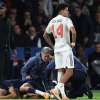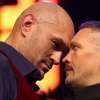What Lies Behind The Odds: Numbers, Probability, And Margin
An odd is far more than a number next to a team name. It contains an assessment of outcome probability and the bookmaker’s share of profit. The lower the odd, the higher—according to analysts—the chance of the event, and the lower the potential payout for the player. The figure appears in the line immediately after the bookmaker factors in statistics, fresh news, and the flow of accepted bets. Numbers are dynamic: an injury to a key striker or a large wager by “whales” can move a price within minutes.
Seven Key Types Of Odds In Football Betting
- Win, Draw, Loss (1-X-2)
The classic market: choose who takes three points or whether parity holds. Average odds range from 1.70 to 4.00. - Double Chance
A more cautious strategy—“the team will not lose.” Lower risk comes at the cost of lower odds (usually 1.30 – 1.70). - Total
A wager on the number of key events—goals, corners, cards, and so on. Popular totals trade between 1.60 – 2.00. - Handicap (Spread)
A prediction about the score margin. Expecting the favorite to win by at least two goals? Take a negative handicap (–1.5). For evenly matched teams, plus handicaps are common. Realistic spreads usually price at 1.60 – 2.00. - Both Teams To Score
A simple yes-or-no proposition on whether both sides will hit the net. Odds are stable, rarely leaving the 1.70 – 1.90 band. - Correct Score
A lottery for the boldest: naming 3-2 or 0-0 is tough, but odds reward you—from 4 to 10 and higher. - First Goal
Which side will break the deadlock? Prices are slightly higher than the 1-X-2 market, yet the favorite is still discounted (2.00 – 4.00).
The Bookmaker Algorithm: From Probability To The Number On The Screen
Before posting an odd, the company solves three tasks:
- Probability Assessment. Gathering statistics, modeling, and consulting experts.
- Cash-Flow Monitoring. Uneven distribution of bets forces line adjustments to minimize risk.
- Margin Fixing. Profit is built into the odd from the start; the more popular the market, the lower the commission.
Add in competitor lines and information bursts (weather, lineups, insider tips) and you’ll see why odds can “bounce” all day long.
Formulas For The Bettor: How To Calculate Chance, Winnings, And Margin
Outcome Probability:P = 100 / Odd
Example: odd 1.85 → probability ≈ 54 %.
Payout And Net Profit:Payout = Stake × Odd
Profit = Payout − Stake
Example: 100 $ × 1.50 = 150 $; net profit = 50 $.
Bookmaker Margin For A Three-Way Market:M = (1/K₁ + 1/KX + 1/K₂ − 1) × 100 %
Five Practical Tips Before You Hit “Place Bet”
- Filter Markets. Focus on bet types you understand best.
- Stay In The “Golden” 1.70 – 2.00 Range. Risk and potential profit are balanced here.
- Don’t Chase “Tasty” Numbers. Inflated odds often hint at hidden factors—injuries, motivation, rotation.
- Apply Bankroll Management. Flat staking or the Kelly model—either way, stake size must be pre-calculated and emotion-free.
- Keep A Betting Journal. Record the reasoning and outcome of each wager to refine your strategy over time.
Football As An Analysis Lab: Trends, Injuries, And Statistics
Before the match, examine:
- Current form. The last five games paint a clearer picture than half-season tables.
- Head-to-head clashes. Some “bogey” clubs regularly steal points from favorites.
- Schedule. A mid-week fixture after a tough Champions League night can level the playing field.
- Injuries and suspensions. Missing a center-back can flip the “total over” market.
- Weather and pitch. Heavy rain or artificial turf affect tempo, errors, and goal count.
The deeper the analysis, the less room for randomness.
Roadmap To Responsible Betting: Play With Your Head, Not Your Emotions
Football betting can be an intellectual hobby grounded in math and knowledge—or a source of stress. Plan your budget, avoid chasing losses, and close the line when emotions take over. Remember: the bookmaker has an infinite bankroll, you don’t. Use odds as a tool, not a thrill, and every wager becomes an informed investment decision.
Stay active, watch matches mindfully, and never forget: the ultimate victory is control over your finances and emotions.






